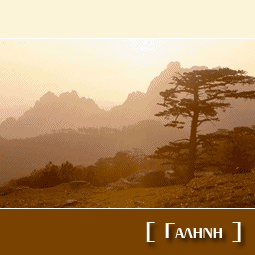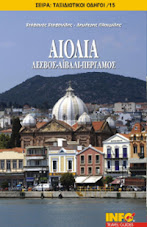
For nearly 500 years Siena has been overshadowed by Florence, but Nick Trend finds that the city has treasures to merit more than a day trip.
"The city of Siena appeared to be deserted… And no bells tolled, and no one wept at any misfortune, for almost all expected to die… and everyone said and believed, 'This is the end of the world.'" So wrote one witness of the Black Death in Siena in the summer of 1348.
The rooftops of Siena, It's time to rediscover Siena's resistance
Siena is suffused with its people's love of pattern
More than 600 years later, I am sitting in the Piazza del Campo, enjoying the warm glow of the September sunshine and attempting to ignore the streams of fellow tourists swirling around the scallop-shaped square. In my mind's eye I am trying to picture the city in its golden years, just before the grip of the plague.
In some ways the attempt is not as unrealistic as it might seem. In 1348, the main bulk of the red-brick Palazzo Pubblico directly in front of me was getting on for 50 years old, and the wooden scaffold that surrounded the famous marble-topped tower - then the tallest in Italy - had just been taken down. Block out the tourists and the backdrop has hardly changed.
Inside the Palazzo, I get an even more vivid impression of the medieval city. On the wall of one of the state rooms is a fresco by Ambrogio Lorenzetti, The Well-Governed City, which he painted between 1337 and 1340. It is an epic scene - some 46ft long - of everyday life in Siena and the countryside beyond.
Among the many vignettes of contemporary life are a wedding party, a teacher lecturing in a school room, men playing a board game, huntsmen heading for the forest and reapers in the fields: an elegant and more sophisticated anticipation of a Bruegel village.
advertisement
It is poignant to look at this vision of hope and prosperity and to reflect on the richness of the cultural life of what was then one of the wealthiest, most progressive and most powerful city states in the world.
A key stop on one of the main pilgrimage routes to Rome, Siena was the centre of an international banking and trading empire that had generated enormous wealth and a fierce rivalry with its Tuscan neighbour, Florence. The latter city usually won the military encounters (the one exception was a rout at Montaperti in 1260, which still seems to mean as much to the Sienese as Bannockburn does to the Scots).
But financially and artistically, Siena was in the ascendancy. Certainly, its civic ambition for lavish building projects and glittering artworks was unparalleled in Europe, and its medieval artists - especially Duccio, Simone Martini and the Lorenzetti brothers - were among the most celebrated of their time.
It was a city in love with colour and extravagance. Even the wooden covers of the annual account books (the Biccherne) were decorated each year by the finest painters.
Siena's most famous commission, Duccio's Maesta, completed in 1311 and now in the Cathedral Museum, was, at the time, the most expensive panel painting ever made in Europe. So proud was the city of its new masterpiece that the work was paraded through the streets before its installation behind the altar.
Twenty years later the civic sights were set even higher. Siena wanted its cathedral - the Duomo - to be the largest in Christendom. Stand outside the great white and green marble cathedral today and you can still see the unfinished, unroofed walls of what would have been an enormous nave. It was never completed. The strain of bubonic plague that had swept the city was particularly virulent.
By the end of the year probably half the population had died. With labourers, architects and engineers in short supply and structural problems already apparent, work simply stopped.
The abandoned frame stands as a monument to the city's decline.
The other symbol of Siena's cultural demise is less obvious. Keep your eyes open as you walk among the medieval network of streets and alleys and you will spot the occasional stone plaque bearing a coat of arms comprising six balls on a blank field - there is an enormous one on the Palazzo Pubblico, for example. It belongs to the Medici family, who finally took power here in 1555, a date that marks the end of the independent Republic of Siena and the final ascendancy of Florence.
What happened during the 200 years or so between the Black Death and the end of the Republic? Florence, a city beset by the same plague, recovered its cultural drive in spectacular fashion. The Florentine Renaissance during the 15th century was one of the most spectacular and enduring bursts of creative energy the world has ever known. It produced Brunelleschi's Dome and Ghiberti's Baptistry Doors, Michelangelo's David and Botticelli's Venus, the great church frescos by Masaccio and Uccello, the Medici Palaces… the list for today's tourists and art lovers goes on and on.
How many of those who flock to Florence to be dazzled by these achievements are aware of the Renaissance in Siena? Most tourists relegate the hill-top city to a day trip, or pause only for a visit to the much-hyped Palio. In fact, as the National Gallery is highlighting in a special exhibition this autumn, Siena enjoyed its own artistic revival after the Black Death. Many of the Florentine artists and sculptors went to work there, and the city produced its own masters, influenced by the Florentine obsession with perspective and lifelike anatomy, but still suffused with Siena's traditional love of colour and pattern. Here is my guide to some of the highlights.
The Duomo and its museum
Some of the most spectacular Renaissance art is in the Duomo itself. The structure of the church dates from 1179 and much of the sculptural decoration is from the golden age of Sienese art in the 13th and 14th centuries. But some of the greatest painters and sculptors of the 15th and 16th centuries were also enticed there.
advertisement
Both Donatello and Ghiberti came from Florence to work with a local sculptor, Jacopo della Quercia, on the bronze panels of the life of John the Baptist that surround the font. It is an extraordinary piece of work - a unique collaborative achievement by the three greatest sculptors of the early Renaissance - yet only a steady trickle of visitors heads down to the Baptistry, immediately below the cathedral, to see it. Perhaps the most exciting panel is one by Donatello depicting Herod's Banquet. In the complex scheme of perspectives, the action recedes through at least four layers into the background.
Also by Donatello, in the cathedral itself, are a tombstone for Bishop Pecci and a figure of John the Baptist. Donatello's roundel of the Madonna, made for the Porta del Perdono, is in the Cathedral Museum, which also houses important reliefs by della Quercia.
The young Michelangelo also worked in the cathedral. He was commissioned to carve 15 statues for the Piccolomini altar, but after completing only three - the figures of St Peter, St Paul and St Pius - he was tempted away to Florence by a more lucrative project: the statue of David. A fourth statue, of St Gregory, which he appears to have left unfinished, had to be completed by an assistant.
Just to the right of the altar is a doorway through to the Piccolomini Library, where the walls are lined with frescos by Pinturicchio and Raphael. They narrate the life of Enea Piccolomini, who became Pope Pius II in 1458, and include what are apparently self-portraits of Raphael and Pinturicchio.
# Duomo open daily, 10.30am-6.30pm, €3; Museo dell'Opera del Duomo open 10am-5pm, €6.
The Pinacoteca Nazionale
The beautification of Siena during the Renaissance did not rely only on visiting artists. The place to trace its own continuing tradition is the Pinacoteca Nazionale, a blissfully quiet museum housed in the 15th-century Palazzo Buonsignori. Compared with the heaving galleries of the Uffizi in Florence, this is a pleasure to explore.
Three artists stood out for me. The intimate, often small-scale narratives of Sassetta, who died in about 1450, have immense charm. And I loved the combination of delicacy and rich colours in the paintings of Giovanni di Paolo (c.1395-1492), especially the Madonna of Humility of about 1435. Perhaps the most interesting discovery for me was the precise, highly architectural paintings of Francesco di Giorgio, who was working in the second half of the 15th century.
If you enjoy the melodrama of the more "Mannerist" style in the first half of the 16th century, there is also a strong collection of paintings by Beccafumi, marking the last gasp of Sienese art before the Florentines snuffed it out.
# Open 8.15am-7.15pm, Tuesday to Saturday; mornings only on Sundays and Mondays, €4.
Santa Maria della Scala
The old hospital and pilgrims' refuge has some fine frescos by Domenico di Bartolo from around 1450, as well as work by Beccafumi.
# Open daily 10.30am-6.30pm, €6.
Palazzo Pubblico
As well as the wonderful 14th-century frescos by Lorenzetti in the Sala Concistoro, there are important late Renaissance murals by Beccafumi celebrating civic virtues.
# Open daily 10am-5.30pm, €7.
State Archives
Open Monday to Saturday by appointment (0039 0577 247145 ), admission free.
The archives house a fascinating collection of painted panels - the Biccherne - which form a pictorial record of Siena from 1258 to 1682.
Opening times given are for the winter months and may vary according to date.
Siena Basics
Nick Trend travelled with British Airways (0870 850 9850, www.ba.com ), which has two flights a day to Pisa from Gatwick from £80 return. The easiest way to transfer to Siena is by train from Pisa station (change at Empoli). He stayed at the Grand Hotel Continental (0039 0577 56011, www.hotel-royal demeure.it ) in the centre of Siena. Room rates in November start at about £110 b & b per person per night, based on two sharing a double for a two-night stay. For more information, see the excellent tourist board website: www.terresiena.it
(πηγή: www.telegraph.co.uk)
Η Σιένα της Αναγέννησης
Ετικέτες Ιταλία
Εγγραφή σε:
Σχόλια ανάρτησης (Atom)











Δεν υπάρχουν σχόλια:
Δημοσίευση σχολίου